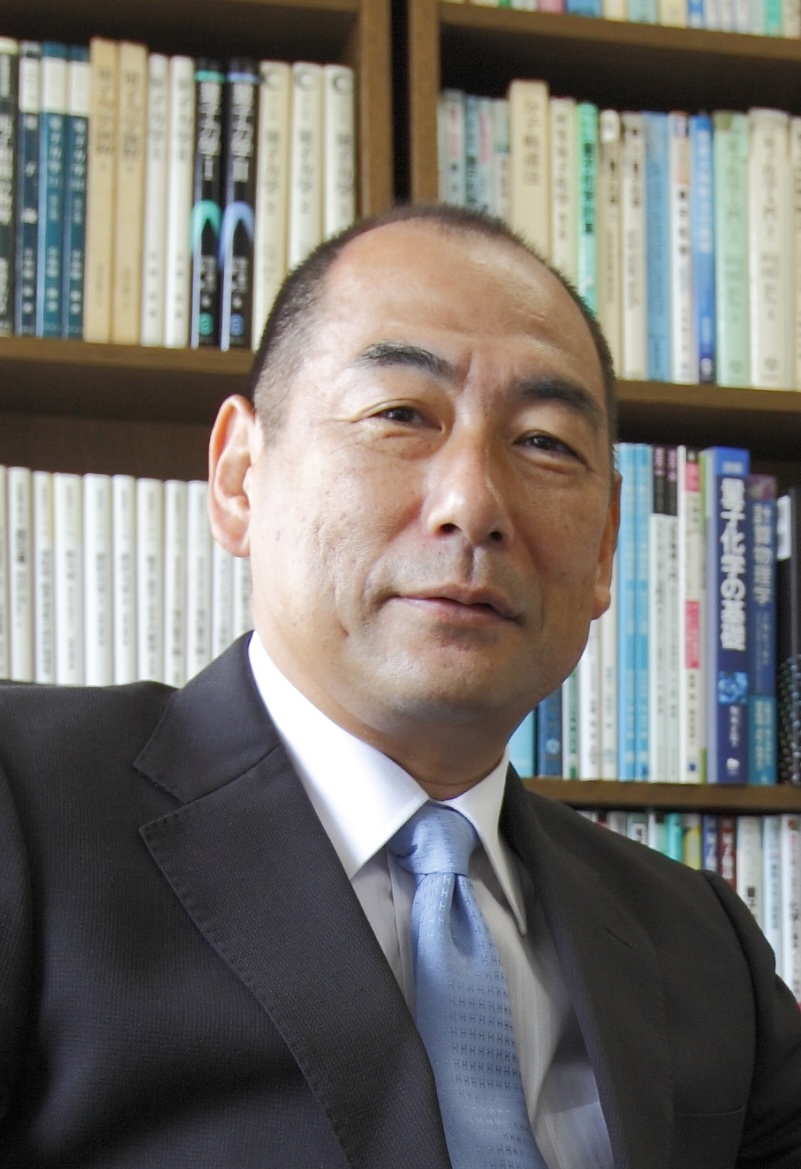

Hiromi Nakai

Born March 9, 1965 in Nara, Japan
Professor, Department of Chemistry and Biochemistry, School of Advanced Science and Engineering, Waseda University, Japan
Email:nakai@waseda.jp
Web: external link
Pople Medal, APATCC (2011); Fellow of the Royal Society of Chemistry (2014); Award for Creative Work, CSJ (2015); Commendation for Science and Technology, MEXT (2016); Member, International Academy of Quantum Molecular Science (2023); Fukui Medal, APATCC (2024)
Author of:
More than 330 publications in quantum chemistry and electronic structure theory.
Important Contributions:
- Development of linear-scaling divide-and-conquer (DC) wave function theories (WFTs): The DC electron-correlation theories were derived by applying his energy density analysis (EDA) technique to Yang’s DC density functional theory (DFT). The DC WFTs were extended to the excited-state theories to handle not only local excitations but also non-local ones. The combination with the semi-empirical density-functional tight-binding (DFTB) method enabled to perform the electronic structure calculations of hundred million atoms, which opened the door to fully quantum-mechanical molecular dynamics (QM-MD) simulations of large complex systems in both ground and excited states.
- Development of practical relativistic two-component theories: Linear-scaling local unitary transformation (LUT) scheme could substantially reduce the computational costs to construct two-component Hamiltonian such as Douglas-Kroll (DK) and infinite-order two-component (IOTC) Hamiltonians. Picture-change corrected (PCC) relativistic DFT, which satisfied theoretical consistency, was realized by making use of PCC density.
- Development of non-Born-Oppenheimer (non-BO) nuclear orbital plus molecular orbital (NOMO) theories: The NOMO theories simultaneously determines the electronic and nuclear wave functions by introducing nuclear orbitals as one-nucleus wave functions. The NOMO theories were extended from the Hartree-Fock (HF) level to the many-body perturbation theory (MBPT), coupled cluster (CC), and DFT ones, in order to cooperate the electron-nucleus correlation effect. An efficient scheme was presented to eliminate the contaminations of translational and rotational motions from the NOMO wave function.
- Development of harmonic solvation model (HSM): The HSM can evaluate Gibbs energies of the systems in condensed phase by adopting the solute-solvent vibrational frequencies on the basis of theoretical consistency.
- Discovery of chemical principles: Symmetry rules for degenerate excitations, that the dipole allowed excited state is highest among the same natures of degenerate excitations, was discovered and confirmed for various systems such as π-π* excitations in diatomic molecules, t-e ones in tetrahedral and octahedral metal complexes, g-g ones in icosahedral B12H122- dianion, h-t ones in icosahedral C60. π*-σ* Hyperconjugation specifically appearing in excited states was found to understand the methyl conformations and rotational barriers in methyl groups bonded to aromatic rings.